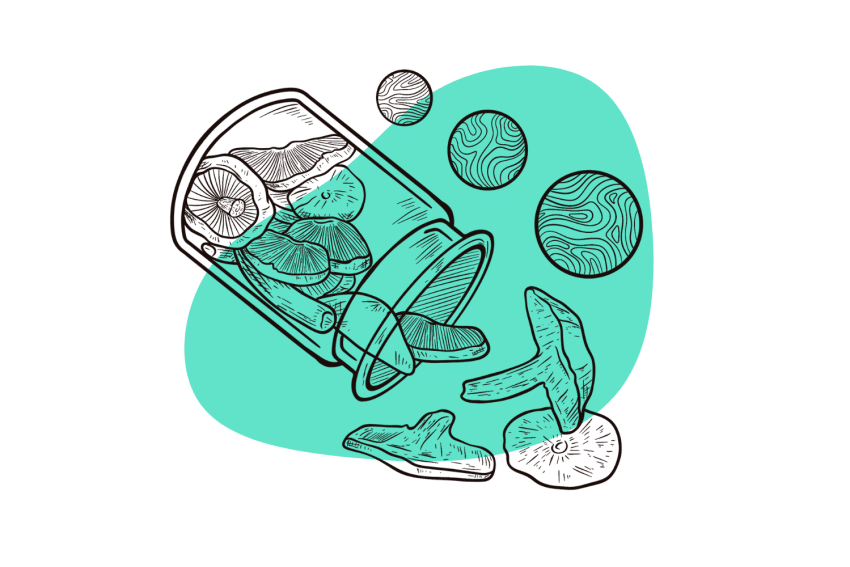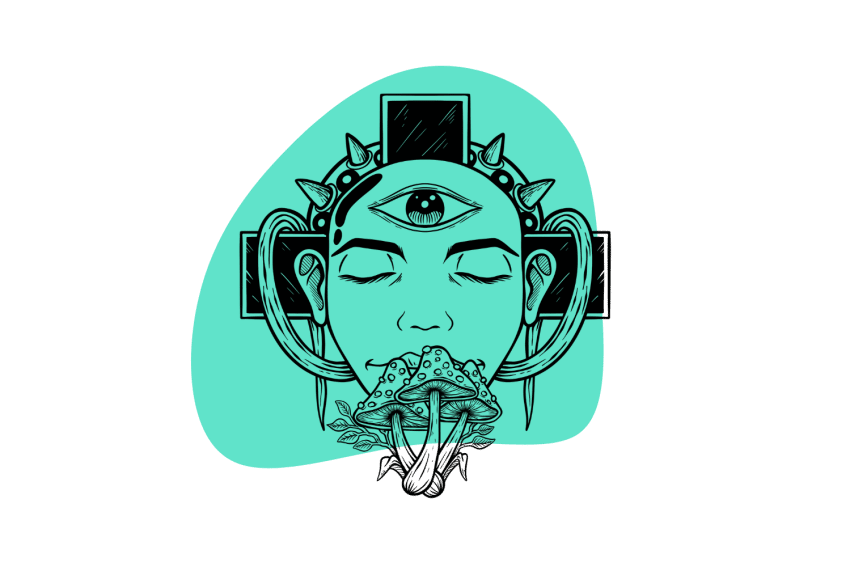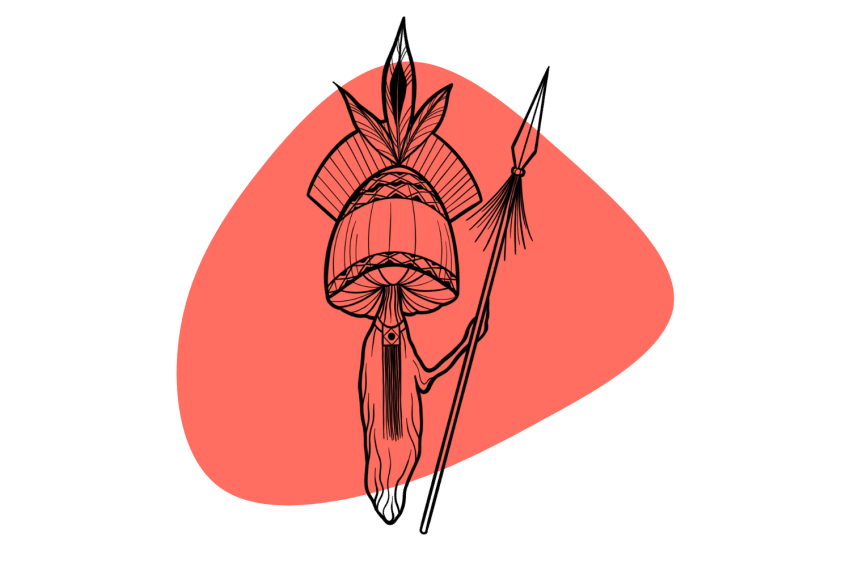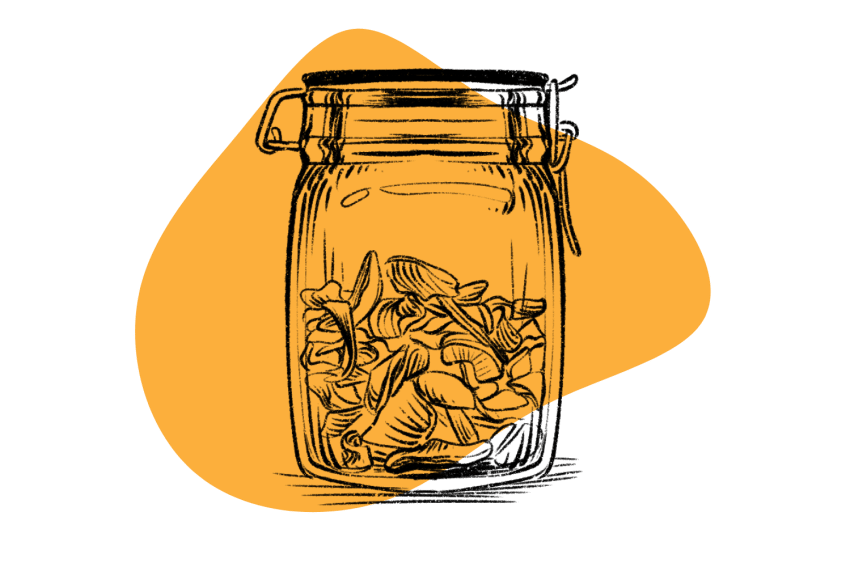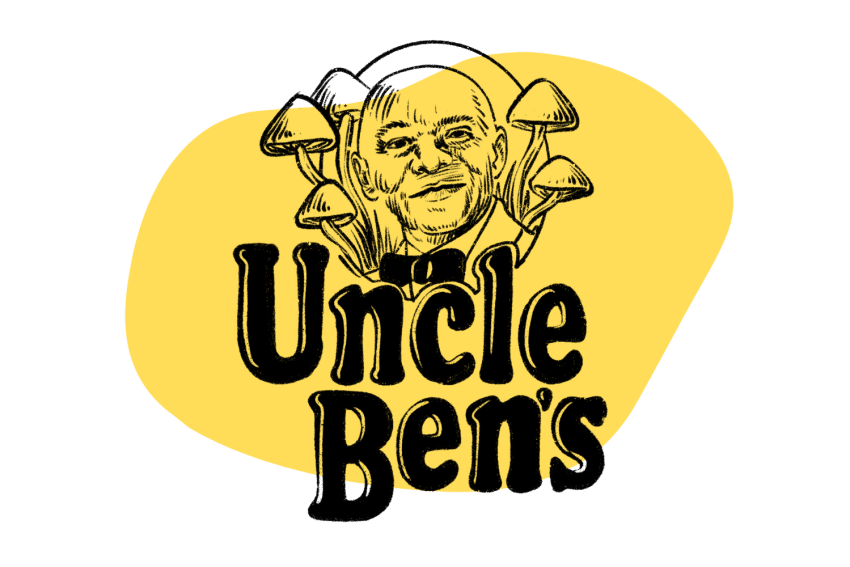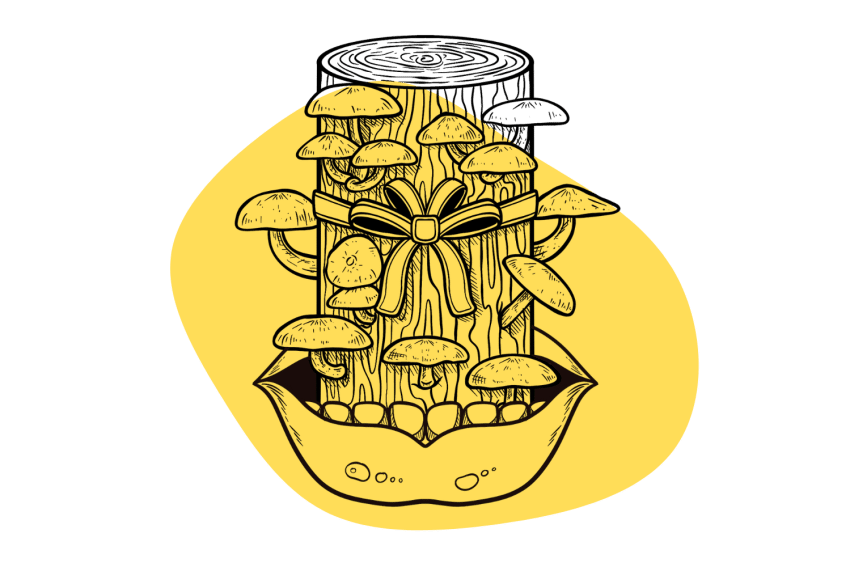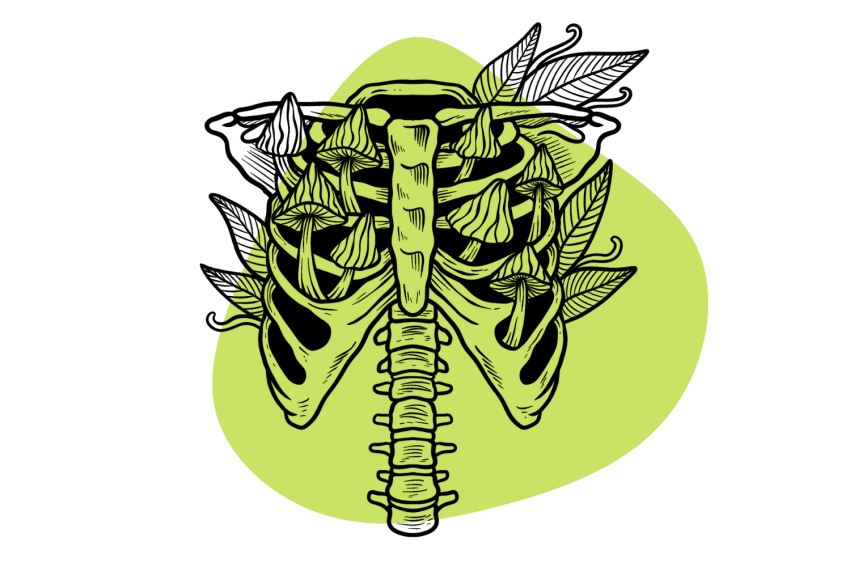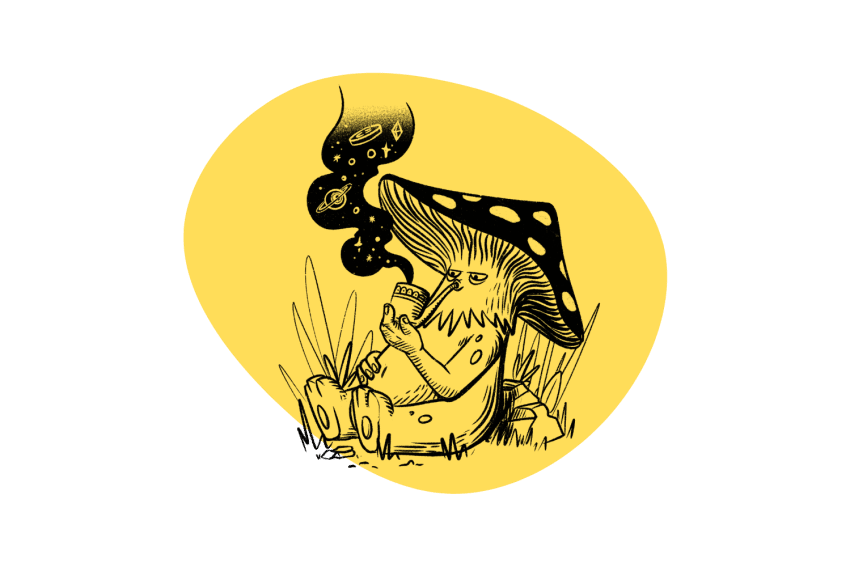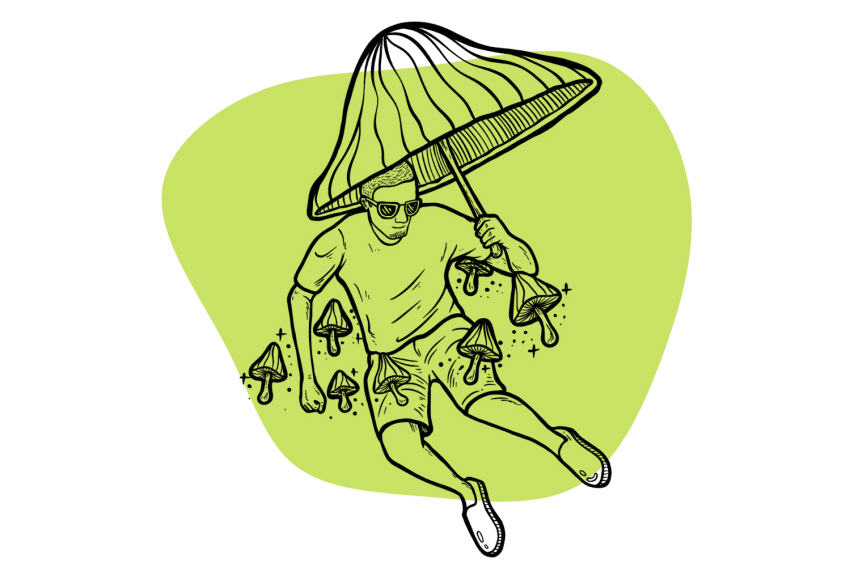Cacao & Magic Mushrooms: Why Is This Combination So Powerful?
The dynamic duo: cacao and mushrooms. Learn how this combination can elevate your psilocybin experience and open new doors to your consciousness.
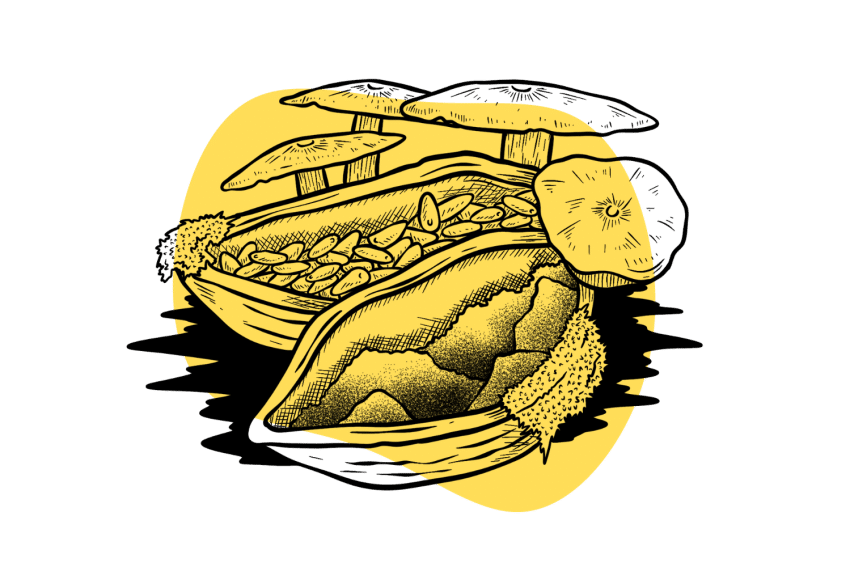
Cacao is a key ingredient in the production of chocolate. In its raw form, it’s prized for its medicinal properties and potential health benefits.
Magic mushrooms are a group of fungi that produce the psychoactive compounds psilocybin and psilocin. When ingested, these mushrooms cause psychedelic effects and have been used spiritually and medicinally for millennia.
Combining cacao with magic mushrooms may accentuate the psychoactive effects of psilocybin and make the consumption process and psychedelic experience more pleasurable.
In this article, we’ll explore the interaction between these two substances by looking at:
- What is cacao
- What are magic mushrooms?
- The ancient combination of cacao and shrooms
- The interaction between cacao and psilocybin
- How consuming cacao with magic mushrooms can benefit you
What Is Cacao?
Cacao (Theobroma cacao) is an evergreen tree native to the tropical regions of Central and South America. The fruit is harvested from this tree, and the seeds inside (often called beans) are used to produce cocoa and chocolate products.
Cacao has been cultivated for thousands of years for its seeds used for culinary, ceremonial, religious, cosmetic, and medicinal purposes. The beans contain antioxidants, flavonoids, and other compounds that may positively affect heart health, cognitive function, and mood.
In some Mesoamerican cultures, cacao beans were used as a currency. They were valuable commodities used for trading and as a means of exchange in the marketplace.
The ancient Mayans and Aztecs knew about the medicinal powers of cacao and would ferment and roast the beans before turning them into a bitter drink. It was drunk to improve mood, treat digestive ailments, heal infections, and even communicate with the gods [1].
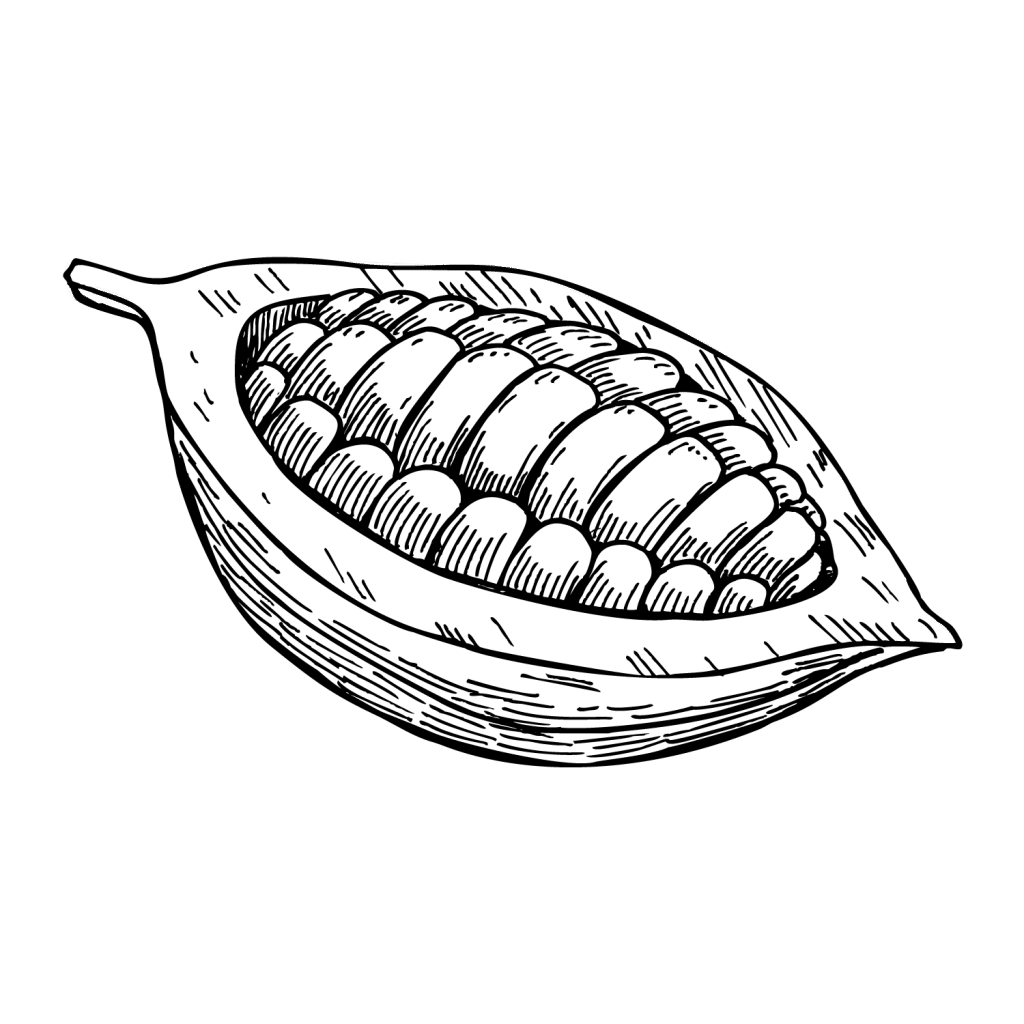
What Are Magic Mushrooms?
Magic mushrooms are a group of fungi that produce the psychedelic compound psilocybin. There are over 180 known mushroom species that produce psilocybin.
Psychedelic mushrooms have been used medicinally and spiritually for thousands of years and can be traced back as far as 2000 BC by the Mayans and later by the Aztecs. The Aztecs called the psilocybin mushroom “teonanàcatl,” which translates to “flesh of the gods.” They used the mushrooms in religious ceremonies and ritualistic sacrifices to contact their gods.
Although people tend not to use magic mushrooms for ritualistic sacrifice today, their spiritual, medicinal, and recreational use is widespread. Magic mushrooms are becoming more and more popular, and gradually, the laws surrounding psilocybin are easing.
Psilocybe cubensis is the most prevalent species across the globe and is a favorite among magic mushroom cultivators because of its resistance to contamination and ease of growth. This species has over 100 different strains, all with varying quantities of psilocybin.
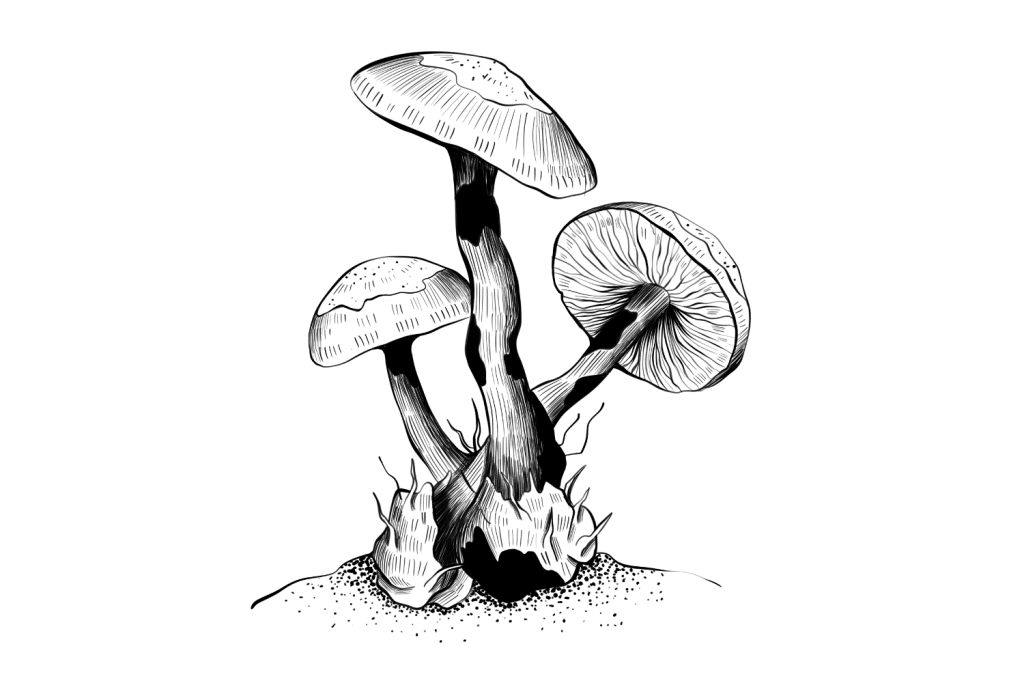
Cacao & Shrooms: An Ancient Aztec Combo?
Although no direct evidence suggests they used cacao and psilocybin mushrooms together, the Aztecs often combined herbs for medicinal and ceremonial purposes. For example, “tlilxochitl” (black flower) and “tlapatl” (root) were often combined to create a ceremonial incense known as “xiuhxochitl.” This incense was used in religious rituals and ceremonies to purify and sanctify spaces.
Cacao is said to open the heart, and magic mushrooms open the mind. The Aztecs likely combined these two godly substances to benefit from each of their divine qualities when embarking on spiritual journeys since both had significant roles in their religious and ceremonial events.
The Aztecs were avid users of both cacao and psilocybin mushrooms. Both substances had magical, therapeutic, and religious purposes, and many speculate that they were combined or consumed alongside each other.
The Aztecs used to make a drink called “xocolatl” out of the cacao bean. They would take fermented and roasted beans ground with corn and chili, combine with water, and repeatedly pour the mixture from height until a thick foam developed. This drink was consumed in several religious, medicinal, and ceremonial circumstances, such as marriage, death, and other deeply spiritual events.
Xocolatl could be the inspiration for hot chocolate, but rather than a sweet, creamy taste and texture, xocolatl had a pungent odor and a spicy, bitter taste.
The Aztecs and ancient Maya gave psilocybin mushrooms the name “teonanàcatl.” It’s believed they used to consume species such as Psilocybe mexicana (the species many believe is “teonanàcatl”) and Psilocybe cubensis to communicate with the divine, gain insight into the spiritual world, and receive guidance from the gods.
Aztec religious ceremonies integrated magic mushroom use and rituals involving music, dancing, chanting, and other forms of spiritual expression. The mushrooms enhanced the ceremonial experience and facilitated a deeper connection with the spirit world.
They also used copal resin alongside shrooms and several other divine herbs, such as peyote, morning glory, salvia divinorum, and tobacco. The resin was burned and inhaled during the ritualistic use of these ceremonial substances.
The Interaction Between Cacao & Psilocybin
The interaction between cacao and psilocybin is unstudied. However, it’s believed that when combined, cacao accentuates the psychoactive effects of the magic mushrooms.
Cacao is not a psychedelic, but it is mildly psychoactive when consumed at large doses in its raw form. It also contains theobromine, which is a mild stimulant [2]. Theobromine may complement the energizing effects of psychedelic mushrooms, leading to a more euphoric and stimulating experience.
Cacao is also an MAO inhibitor that modulates neurotransmitters such as serotonin and dopamine [3]. This is one of the reasons cacao is believed to be effective in managing depression, anxiety, and other neurological and psychiatric illnesses [4].
MAO inhibitors help modulate the same neurotransmitters psilocybin activates (primarily serotonin) and are likely the main reason cacao elevates and prolongs the psychedelic effects of magic mushrooms when combined.
Why Consume Magic Mushrooms With Cacao?
The main reason cacao and magic mushrooms are combined is to accentuate the psychedelic effects of psilocybin. However, many individuals have explored the combination for several different reasons:
- Flavor Masking: Magic mushrooms’ strong and unpleasant taste can be challenging for some people to stomach. Combining them with cacao can help mask the taste and make consumption more enjoyable.
- Experience Enhancement: As mentioned, mixing magic mushrooms with cacao appears to enhance the overall psychedelic experience. i
- Ritual & Tradition: For some, incorporating cacao into their magic mushroom consumption may be part of a personal ritual or tradition. Rituals and ceremonial practices can enhance the meaning and intention behind a psychedelic experience, even if there’s no “science” to back it up.
- Opening the Heart & Mind: Cacao is sometimes called a “heart-opening” plant medicine, believed to facilitate emotional and spiritual connection. Psilocybin is often referred to as a “mind-opening” plant medicine, believed to expand consciousness and dissolve ego. Some believe combining cacao with magic mushrooms can lead to a more emotionally intense and heart-centered experience.
How To Use Cacao and Mushrooms Together
The most common way to take cacao and magic mushrooms is to combine them in a warm drink. You can create a psilocybin and cacao-infused tea by grinding a dose of magic mushrooms, combining it with raw cacao, and brewing in hot water for 20 to 30 minutes before straining.
Cacao shroom tea is easy on the stomach, fast-acting, and produces intense psychedelic effects. Mixing the two substances can also help cover the flavor of the shrooms, although it will be a bit on the bitter side.
It’s important to approach this combination cautiously if you’re relatively new to psychedelic substances. Even if you’ve taken shrooms before, decrease your “usual” dose when combining it with cacao to make sure the experience doesn’t become too intense. Remember, you can always take more, but you can never take less.
Make sure you use high-quality cacao. Raw or roasted cacao beans or nibs are best for making a psychedelic brew. Avoid using sweetened or “high-cacao content” chocolate products.
Here’s a simple recipe for making a psychedelic mushrooms and cacao brew:
- Boil a kettle of water
- Grind or powder a dose of dried mushrooms
- Grind the cacao beans or nibs to a fine powder
- Add the cacao powder to the hot water in a thermal flask
- Add the ground mushrooms to the flask
- Allow to steep for 20 minutes to one hour
- Strain off the cacao and ground mushrooms using a coffee filter or cheesecloth
- Enjoy the brew in a comfortable, relaxing setting
References
- Dillinger, T. L., Barriga, P., Escárcega, S., Jimenez, M., Lowe, D. S., & Grivetti, L. E. (2000). Food of the gods: cure for humanity? A cultural history of the medicinal and ritual use of chocolate. The Journal of nutrition, 130(8), 2057S-2072S.
- Martínez-Pinilla, E., Oñatibia-Astibia, A., & Franco, R. (2015). The relevance of theobromine for the beneficial effects of cocoa consumption. Frontiers in pharmacology, 6, 30.
- Bellot, M., Faria, M., Gómez-Canela, C., Raldúa, D., & Barata, C. (2021). Pharmacological modulation of behaviour, serotonin and dopamine levels in Daphnia magna exposed to the monoamine oxidase inhibitor deprenyl. Toxics, 9(8), 187.
- Jackson, S. E., Smith, L., Firth, J., Grabovac, I., Soysal, P., Koyanagi, A., … & Yang, L. (2019). Is there a relationship between chocolate consumption and symptoms of depression? A cross‐sectional survey of 13,626 US adults. Depression and anxiety, 36(10), 987-995.

